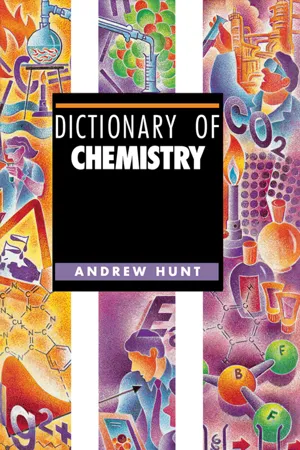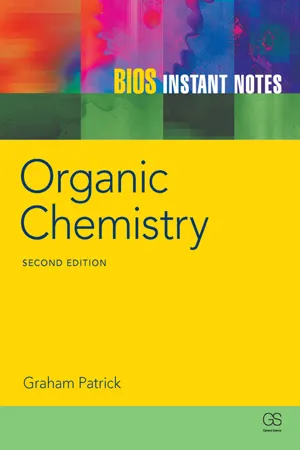Chemistry
Reactions of Halogens
The reactions of halogens involve their ability to react with other elements and compounds. They can undergo redox reactions, displacing less reactive halogens from their compounds. Halogens can also form compounds with metals, creating salts known as halides. These reactions are important in various industrial processes and in the synthesis of organic compounds.
Written by Perlego with AI-assistance
Related key terms
Related key terms
1 of 4
Related key terms
1 of 3
3 Key excerpts on "Reactions of Halogens"
- eBook - ePub
The Really Useful Book of Secondary Science Experiments
101 Essential Activities to Support Teaching and Learning
- Tracy-ann Aston(Author)
- 2017(Publication Date)
- Routledge(Publisher)
EXPERIMENT 49 Pattern seeking: Which element in group 7 of the periodic table is the most reactive?LEARNING OBJECTIVES:
Investigate the pattern in reactivity of halogens as you move down group 7.INTRODUCTION:
The students use universal indicator paper to test halogen solutions before performing some displacement reactions.USEFUL PRIOR WORK:
The students should know the basic structure of the periodic table.BACKGROUND SCIENCE:
The name halogens is given to the group 7 elements in the periodic table (a group is the name given to a vertical column in the periodic table). The halogens are highly reactive, non-metals that form acidic compounds when they are reacted with hydrogen that can be used to make salt (halogen means ‘salt former’). They also react very vigorously with the group 1 elements (this is due to the fact that group 1 elements have one electron in their outer shell, whilst the halogens have seven, therefore the group 1 elements can easily give off their one electron to the halogens, giving the halogen a full outer shell of eight electrons). The halogens become less reactive as you move down the group. - eBook - ePub
- Andrew Hunt(Author)
- 2014(Publication Date)
- Routledge(Publisher)
isotope to decay away. It is also the time for the count rate for alpha or beta particles from a sample to fall by half. Half-lives for radioactive isotopes can be as short as a fraction of a second or as long as millions of years. The half-lives of radioactive isotopes are unaffected by changes in temperature or pressure or the presence of catalysts. The half-life remains the same whether the atoms are in the elemental state or in one of its compounds.halide ions are the ions of the halogen elements. They include the fluoride (F– ), chloride (Cl– ), bromide (Br– ) and iodide (I– ) ions.Warming sodium chloride with concentrated sulfuric acid produces clouds of hydrogen chloride gas. This acid–base reaction can be used to make hydrogen chloride.Both sulfuric acid and hydrogen chloride are strong acids. The reaction goes from left to right because the hydrogen chloride is a gas and escapes from the reaction mixture, so the reverse reaction cannot happen.This type of reaction cannot be used to make hydrogen bromide or hydrogen iodide, because bromide and iodide ions are strong enough reducing agents to reduce sulfur from the +6 state to lower oxidation states.The reactions of halide ions with sulfuric acid show that there is a trend in the strength of the halide ions as reducing agents:• chloride ions do not reduce sulfuric acid at all, so the only gaseous product is hydrogen chloride gas• bromide ions turn to orange bromine molecules as they reduce H2 SO4 to SO2 (mixed with some hydrogen bromide gas)• iodide ions are the strongest reducing agents; they turn into iodine molecules as they reduce H2 SO4 to S and H2 S; scarcely any hydrogen iodide forms.So the trend as reducing agents is: I– > Br– > Cl– . In group 7, iodine is the weakest oxidizing agent so it has the least tendency to form negative ions. Conversely, iodide ions are the ones that most readily give up electrons and turn back into iodine molecules.halogenation: see chlorination, bromination and iodination.halogenoalkanes (or haloalkanes) are compounds formed by replacing one or more of the hydrogen atoms in alkanes with halogen atoms.Names and structures of some halogenoalkanes. A primary halogenoalkane has the halogen atom at the end of the chain. A secondary compound has the halogen atom somewhere along the chain but not at the ends. A tertiary halogenoalkane has the halogen atom at a branch in the chain. - eBook - ePub
- Graham Patrick(Author)
- 2004(Publication Date)
- Taylor & Francis(Publisher)
The polar C–X bond means that alkyl halides have a substantial dipole moment. Alkyl halides are poorly soluble in water, but are soluble in organic solvents. They have boiling points which are similar to alkanes of comparable molecular weight. The polarity also means that the carbon is an electrophilic center and the halogen is a nucleophilic center. Halogens are extremely weak nucleophilic centers and therefore, alkyl halides are more likely to react as electrophiles at the carbon center.Reactions
The major reactions undergone by alkyl halides are (a) nucleophilic substitution where an attacking nucleophile replaces the halogen (Figure 1a ), and (b) elimination where the alkyl halide loses HX and is converted to an alkene (Figure 1b ).Figure 1. Reactions of alkyl halides.Spectroscopic analysis
The IR spectra of alkyl halides usually show strong C–X stretching absorptions. The position of these absorptions depends on the halogen involved i.e. the absorptions for C–F, C–Cl, C–Br and C–I occur in the regions 1400–1000, 800–600, 750–500 and 500 cm−1 respectively.The presence of a halogen can sometimes be implicated by the chemical shifts of neighboring groups in the nmr spectra. For example the chemical shifts in the 1 H nmr spectrum for CH 2 I, CH 2 Br and CH 2 Cl are 3.2, 3.5 and 3.6 respectively.Good evidence for the presence of a halogen comes from elemental analysis and mass spectrometry. In the latter, there are characteristic peak patterns associated with particular halogens as a result of the natural abundance of various isotopes. For example, bromine has two naturally occurring isotopes of 79 and 81 that occur in a ratio of 1:1. This means that two peaks of equal intensity will be present for any organic compound containing bromine. For example, the mass spectrum for ethyl bromide has two peaks of equal intensity at m/e 108 and 110 for the molecular ions 12 C2 1 H5 79 Br and 12 C2 1 H5 81 Br respectively.In contrast, chlorine occurs naturally as two isotopes (35 Cl and 37
Index pages curate the most relevant extracts from our library of academic textbooks. They’ve been created using an in-house natural language model (NLM), each adding context and meaning to key research topics.
Explore more topic indexes
Explore more topic indexes
1 of 6
Explore more topic indexes
1 of 4


